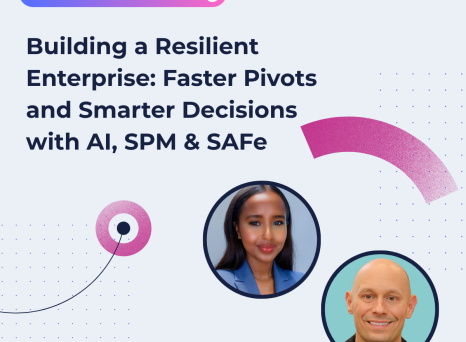The beginning of the new year is a time when experts and professionals try to predict future trends in order to calibrate accordingly their professional and organizational goals. In this blog post we will dive into 5 major trends what will shape project portfolio management in 2018?
Better data visualization
Decision making is the key for better project portfolio management. And without proper and precise data visualization, making the right decision becomes difficult. Previously and still today to some extent, project practitioners use endless spreadsheets with boring data presented in columns and rows. Thus, losing valuable time in heaps of data. Today, thanks to many PPM solutions, many organizations can now create customized dashboards with good visual representations, including colorful charts, graphs and histograms, to present data in a visible and digestible format. Therefore, ensuring quick decisions-making which leads to actionable tasks and tangible results. So dashboards with better data visualization will be an important trend 2018.
Integration with other tools
In the past few years we have seen a plethora of project management solutions, ERP tools or other work management tools that cater to different needs and requirements. Different departments and teams are using different tools according to their needs and requirements. It is becoming increasingly difficult to use a single unique solution across entire companies, even in small or mid-size companies. Even though organizations would like to implement a single unified software solution for better productivity, the reality is that all team work differently due to their unique set of challenges, constraints and objectives. So, in 2018 the market will see more PPM solutions that can integrate well with existing or other third-party software solutions. And, previously standalone solutions will improve their integration capabilities in order to survive.
Resource management
So far, the resource management aspects have been either sidelined, taken care of separately or were a by-product of project management. Often resource management was either handled separately or not taken care of during the initial project planning stage. The highlight was more often on project planning, Gantt charts, budgets or deadlines leading to inevitable surprises during the execution phase. Also, during the execution phase project managers lacked a bird-eyed view of the resources. This is ok for small scale projects. But for large scale projects involving colossal budgets, resource management becomes critical. In this era of gig economy, distributed teams or remote teams are becoming more common, therefore resource management, planning and allocation become even more important. It is critical to have a good grasp on resource capacity against incoming demand. Recently, more and more organizations are including resource planning, management and allocation best practices during the entire life-cycle of the project, in some cases having a real-time view on resource allocation and this trend or best practice will definitely continue in 2018.
What-if scenario simulations
This is the holy grail of project portfolio management because it brings more predictability! In fact, organizations use project portfolio management approach to bring more predictability in the unpredictable and volatile world of business. Thanks to what-if simulations, project managers can stop gambling and make accurate decisions or anticipate changes by exploring different future possibilities. Using precise data, they can explore different permutations and combinations to assess risks before hand and then make an accurate decision to ensure maximum performance. In an ever-changing world, using what-if scenario capabilities, organizations can adapt their strategy! So, what-if scenarios are here to stay for a long time.
Hybrid methodologies
Gone are the days when debates about Agile or traditional methods would degenerate into heated ideological discussions. Previously either young professionals would only swear by Agile methodologies whereas senior project managers stuck to traditional methodologies. Lately, this has been changing. The conversation is more about how to use both methodologies at the same time leading to hybrid methodologies. The attitude has shifted from debating unnecessarily to using best practices that deliver results. More and more project managers are using Agile practices in projects managed using traditional methodologies. The blending and mishmash of various methodologies to manage projects and deliver results will be one of the major trends of project portfolio management in 2018.


